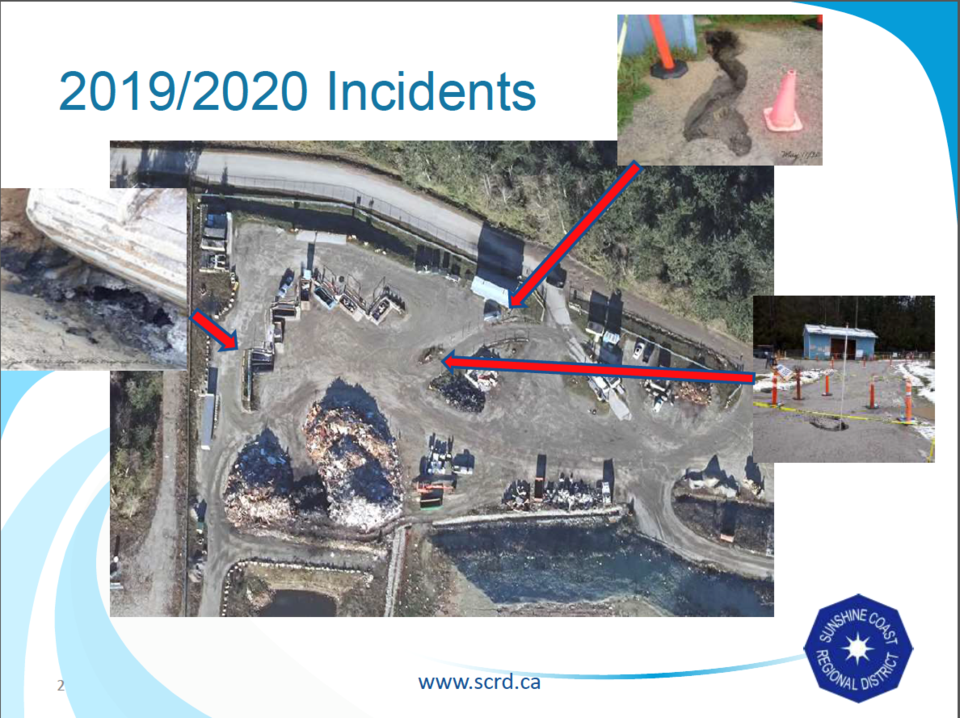It’s been at least 20 years since drywall was buried at the Sechelt dump and the stuff has been deteriorating into a ‘paste-like substance’ that is now blamed for a series of sinkholes in need of a pricey solution.
At least three sinkhole problem areas have been identified – one at the share shed, one near the drop-off location and a third in and around the landfill’s exit lane.
For now, the entire upper area of the landfill has been closed off and a smaller temporary drop-off area has been set up with low-rise bins, but that’s increased operating costs, since more trucks are needed to ship out garbage as the bins are smaller, and more staff are needed to support the changes.
Sunshine Coast Regional District (SCRD) staff are looking at options to fix the issue and costs could reach more than $1 million, even as they expect to close the landfill in 2025.
“In total, the cheapest option that we’ve been able to identify so far is over a million dollars,” infrastructure services manager Remko Rosenboom told SCRD directors at a June 18 committee meeting.
They could excavate and pound down the voids to collapse them, use an excavator to fill all the voids and close it off, or else drill down into the ground and fill the voids with grout. Those options are expected to cost between $450,000 to more than $1 million and may necessitate temporary landfill closure.
It will cost more than half a million dollars to redevelop the drop-off area.
Even though holes are at the dump site, they can’t be filled with trash. That’s because they are located outside the active landfill area, and doing so would violate permits.
Elphinstone director Donna McMahon asked that staff include in their report an analysis of the greenhouse gas impacts or costs of the various options. “We should be looking at our GHG emissions for any projects we are undertaking,” she said.
The areas of ground disturbance are where drywall used to be deposited, which was permitted at the landfill until the late 1990s. Rain and groundwater has caused the drywall to deteriorate into “a paste-like substance,” said Rosenboom, which reduced the volume of the material.
“As a result, cavities, voids, are being created underneath that area of the landfill.”
No injuries or damage to equipment has resulted from the sinkholes and staff don’t expect more voids to materialize because all of the drywall has likely deteriorated into a “paste-like mass,” Rosenboom said.
Staff haven’t ruled out keeping the temporary drop-off area in place until the landfill is closed. They’re also considering whether it makes sense to transform the drop-off area into a transfer station in anticipation of the closure.
A report on long-term options for waste on the Sunshine Coast is expected later this year.
Directors will be grappling with budgetary implications later this month and are expected to have to decide on options at a committee meeting in July.
If all goes according to plan, the project could be completed by November or December. “This is a tight time frame,” said Rosenboom, adding they want to address the safety issue “as soon as possible” and return to normal operations.
The issue was first raised in January and the dump, located at 4901 Dustry Rd., was closed temporarily to allow staff to analyze it. Directors had approved spending $200,000 through taxation to investigate a cause and develop a short-term operating plan.



